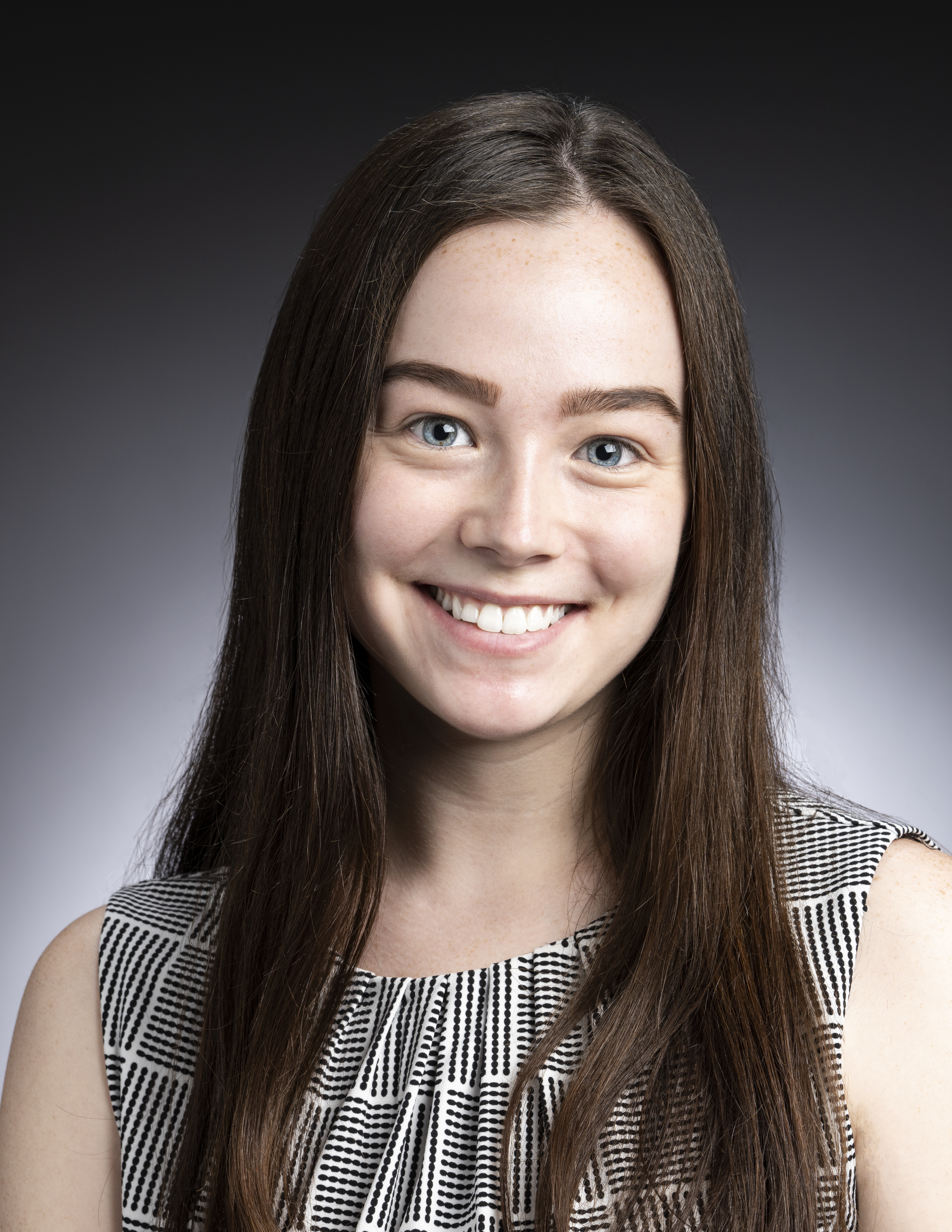
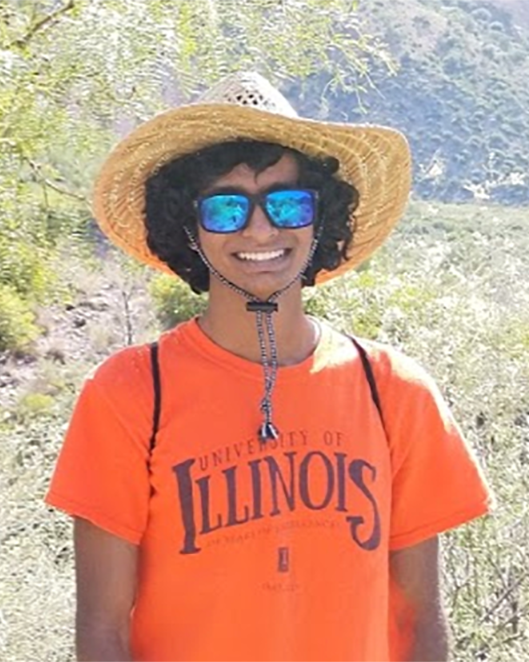
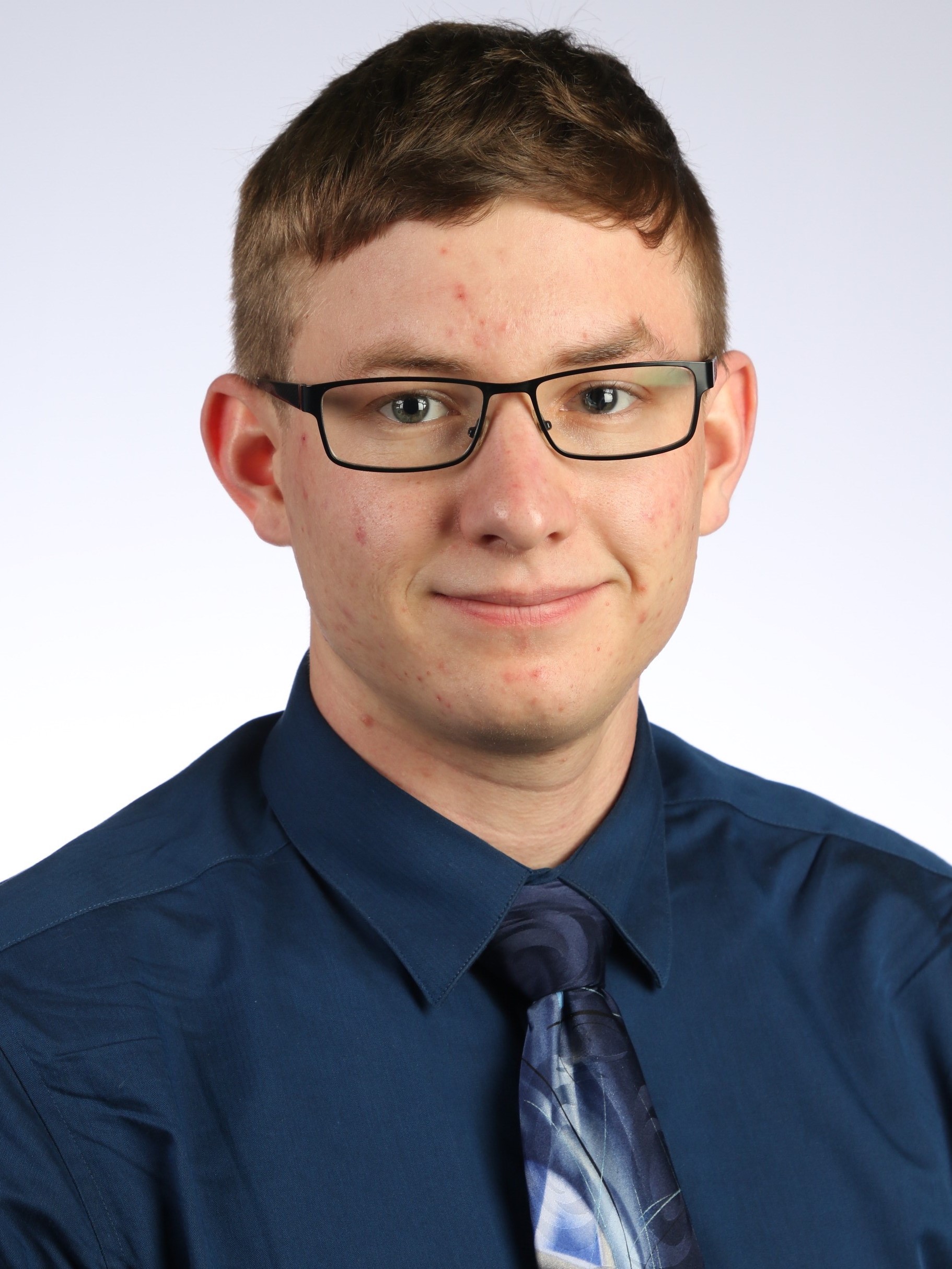
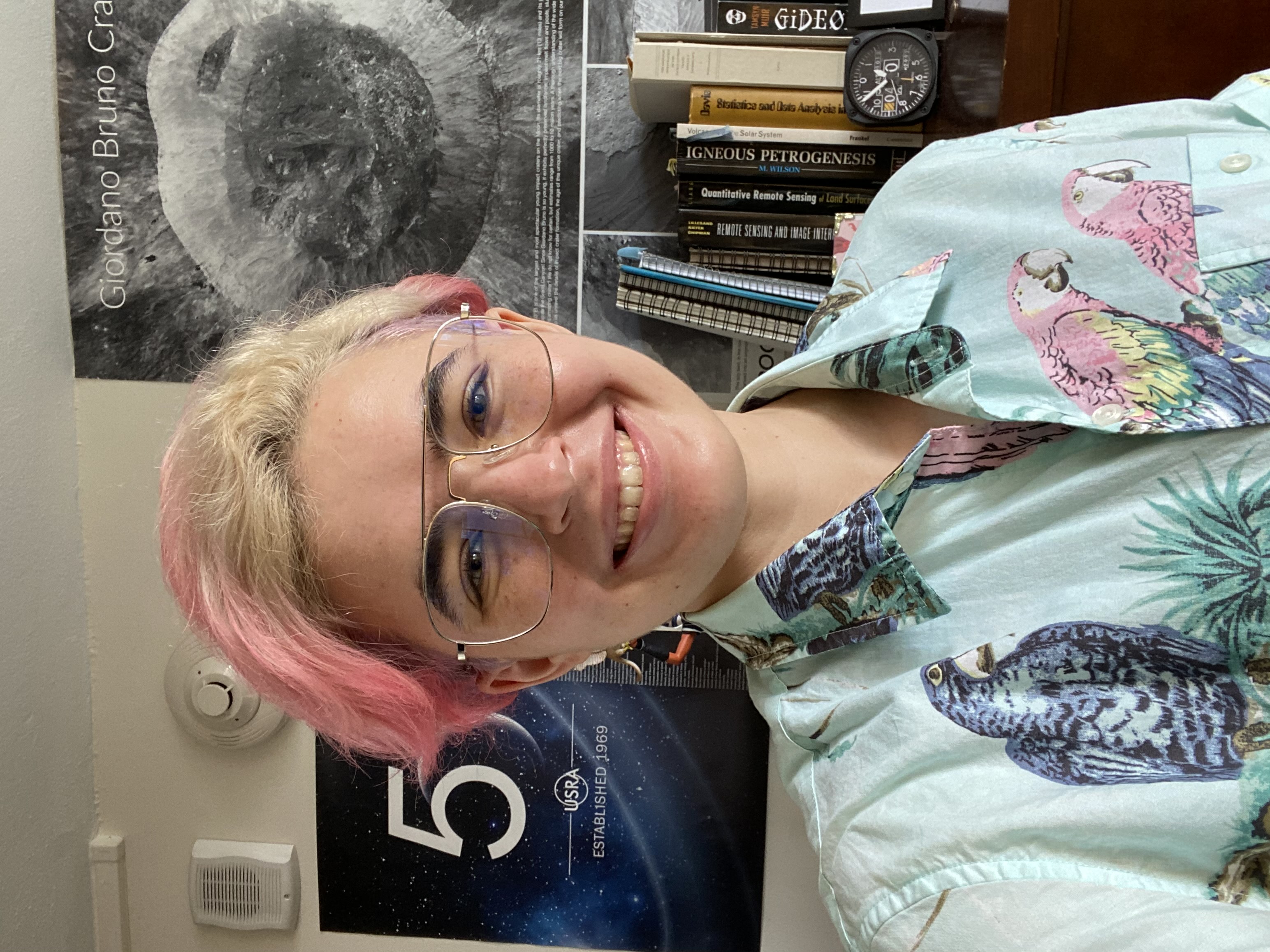
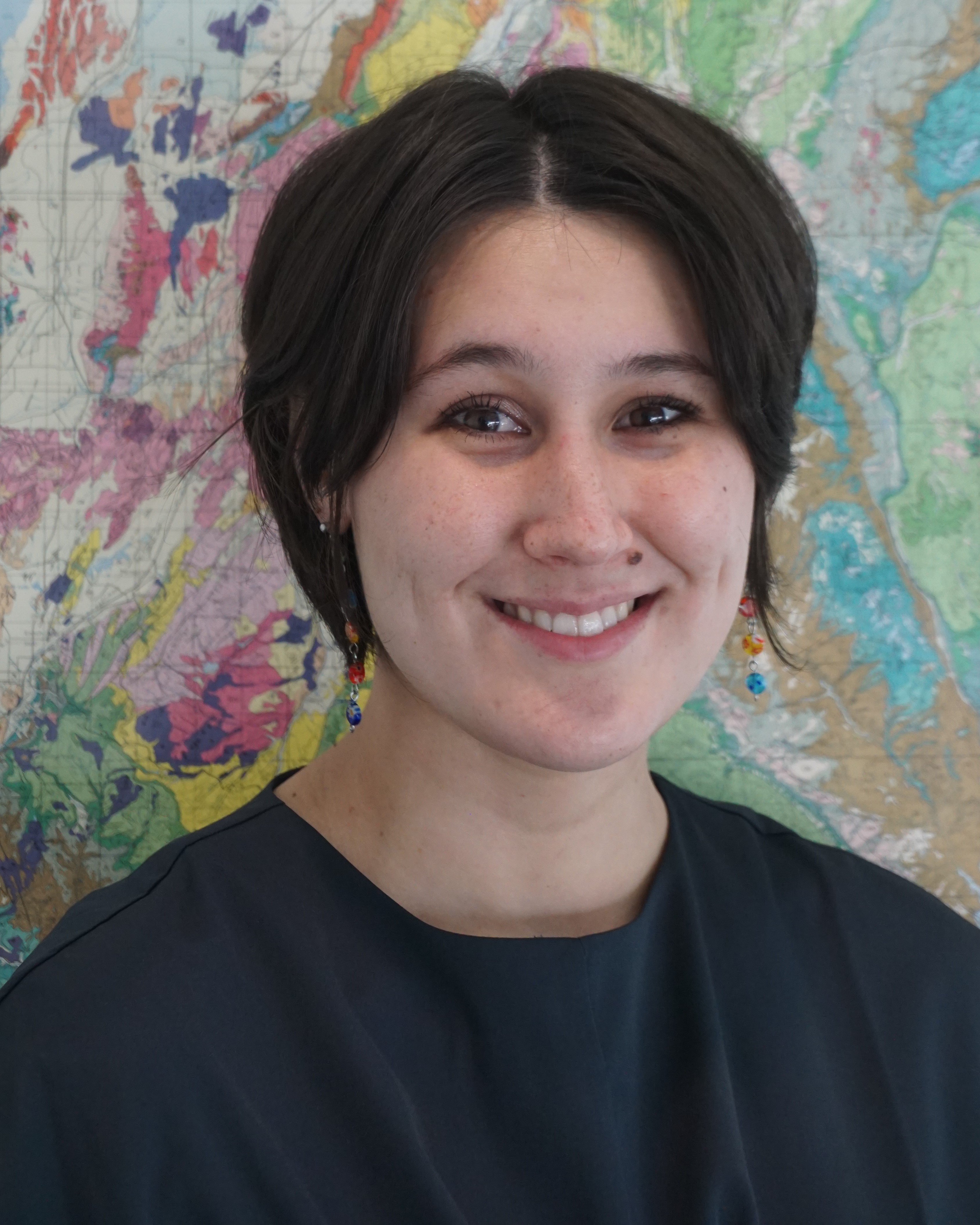
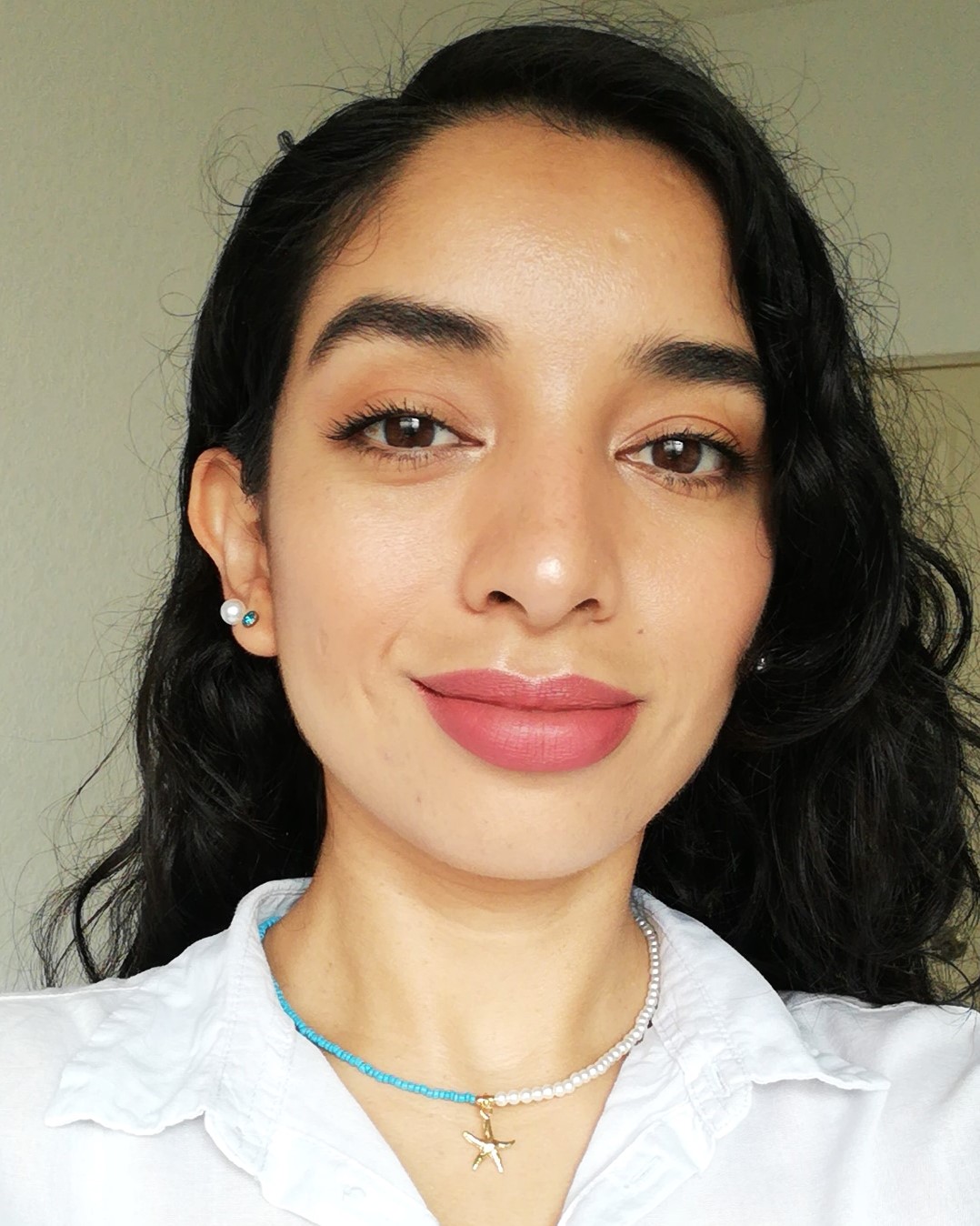
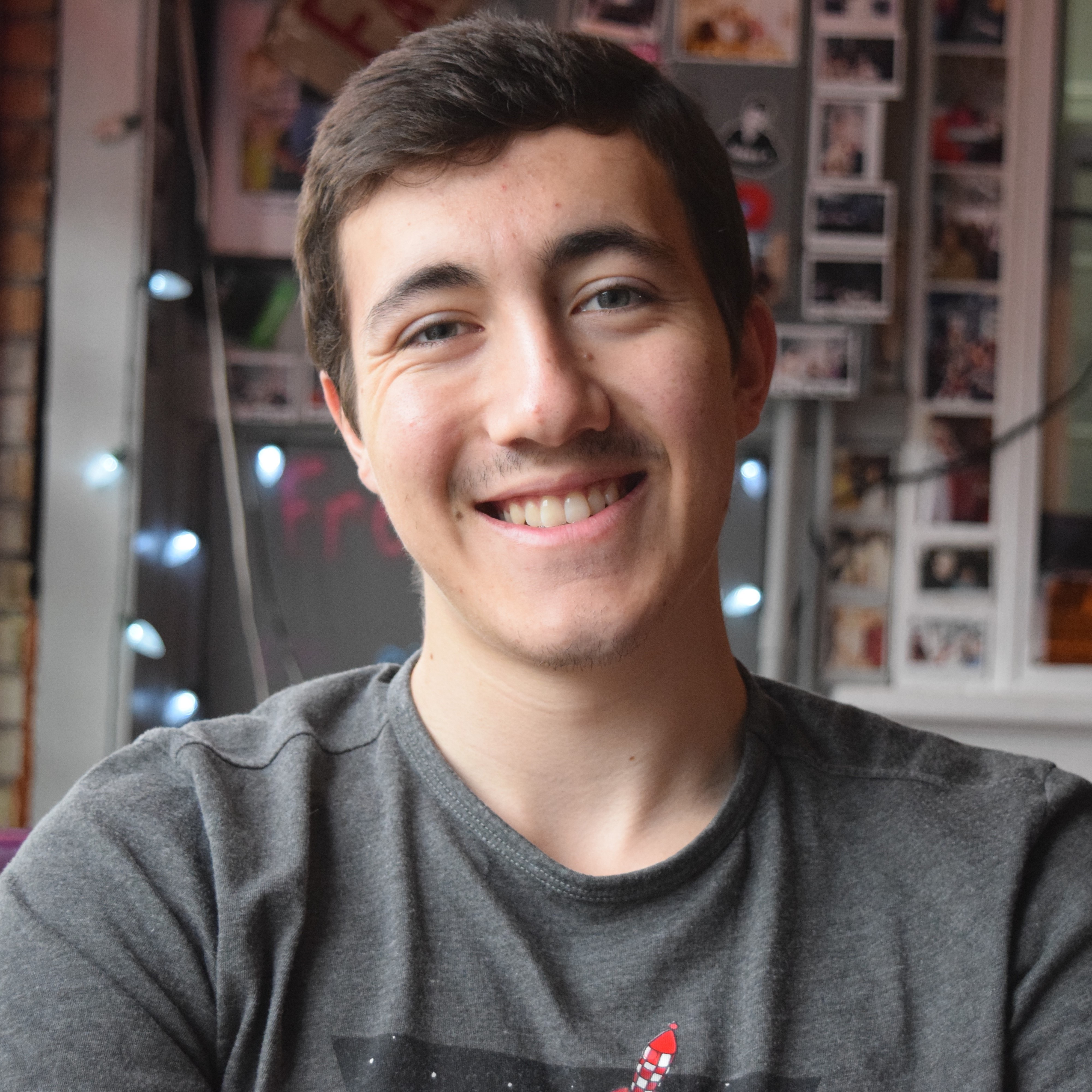







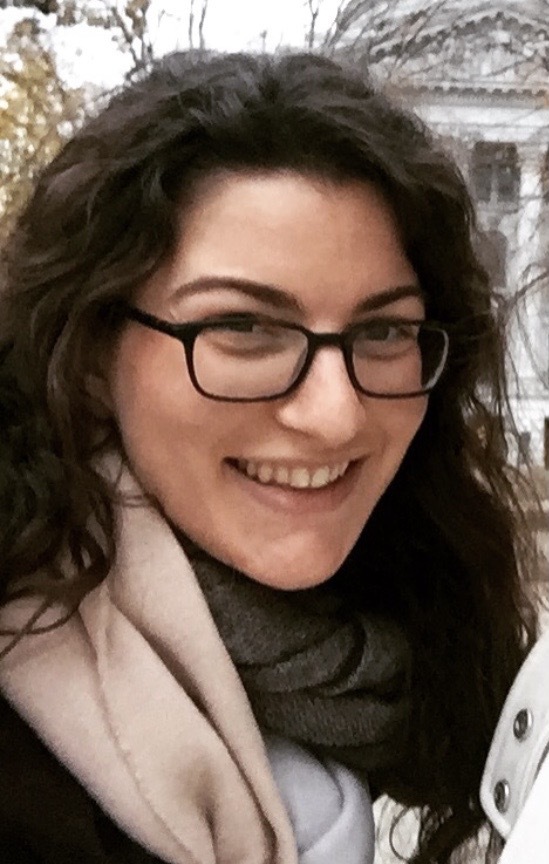
Dr. Emily Lichko is currently a NSF AGS (Division of Atmospheric and Geospace Sciences) Postdoctoral Research Fellow at the University of Arizona, working with Assistant Professor Kristopher Klein on the effects of linear and nonlinear physics on the onset and evolution of microinstabilities in space-relevant plasmas. Dr. Lichko’s research focuses on kinetic plasma physics processes in space and astrophysical plasmas, in particular as they relate to questions of particle heating and nonlinear processes that affect the evolution of collisionless, anisotropic plasmas.
Emily received her B.S. in Physics and Applied Mathematics from the University of Michigan in 2013 and her Ph.D. in 2020 from the University of Wisconsin-Madison, working under the supervision of Professor Jan Egedal. Outside of her research, she enjoys swimming, biking, running, and failing to replicate recipes from the Great British Bake Off.
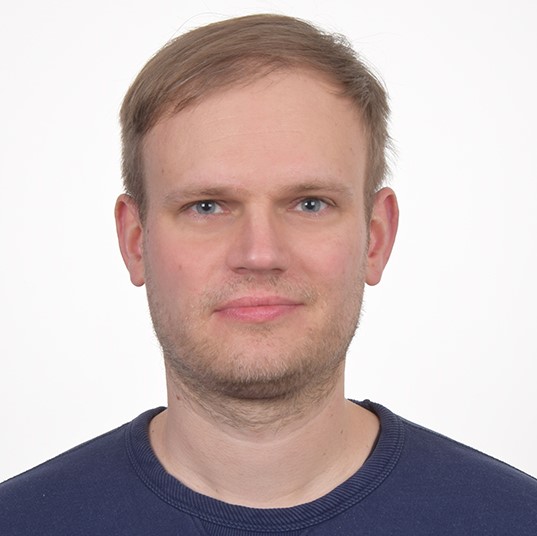 Dr. Dominik Hintz joined LPL in May 2021 as a Postdoctoral Research Associate. Together with Professor Travis Barman, he works on stellar atmospheres of the Sun and solar-like low mass stars using the state-of-the-art atmosphere code PHOENIX. The project encompasses improvements of the code in order to gain valuable interpretations of the physics in the atmospheres of these stars when comparing the model spectra to real observations. In particular, the work aims at investigations of ultraviolet radiation of planet-host stars which affect the habitability of exoplanets orbiting them.
Dr. Dominik Hintz joined LPL in May 2021 as a Postdoctoral Research Associate. Together with Professor Travis Barman, he works on stellar atmospheres of the Sun and solar-like low mass stars using the state-of-the-art atmosphere code PHOENIX. The project encompasses improvements of the code in order to gain valuable interpretations of the physics in the atmospheres of these stars when comparing the model spectra to real observations. In particular, the work aims at investigations of ultraviolet radiation of planet-host stars which affect the habitability of exoplanets orbiting them.
Dominik lived in Hamburg, Germany, before moving to Tucson. He earned his B.Sc., M.Sc. and Ph.D. in physics at the University of Hamburg. His Ph.D. research dealt with the investigation of stellar activity among M dwarf stars. This work focused on fitting atmosphere models to observed spectral lines from the visible to the near-infrared wavelength range using high-resolution spectra in order to improve the understanding of stellar activity among low mass stars.
During his free time, Dominik is interested in sports such as soccer, cycling, and football. He also likes to travel and to engage in outdoor activities.
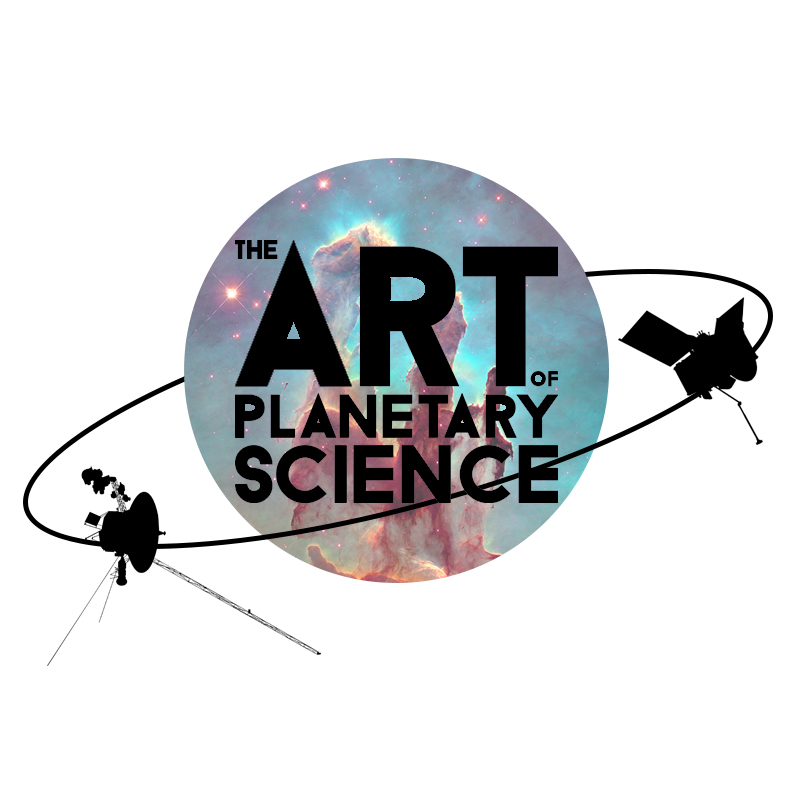 The Art of Planetary Science (TAPS) was proud to hold its 8th annual exhibition this year, with the special theme of Space Travel. Like many recent events on the University of Arizona campus, the 2021 show went hybrid, hosting 112 works of art in person and a total of 300 online! The theme was well received by the artists who submitted pieces this year, with 203 of the accepted submissions dedicated to the Space Travel theme; 54 of these were displayed in the Kuiper building for the opening weekend (September 24-26).
The Art of Planetary Science (TAPS) was proud to hold its 8th annual exhibition this year, with the special theme of Space Travel. Like many recent events on the University of Arizona campus, the 2021 show went hybrid, hosting 112 works of art in person and a total of 300 online! The theme was well received by the artists who submitted pieces this year, with 203 of the accepted submissions dedicated to the Space Travel theme; 54 of these were displayed in the Kuiper building for the opening weekend (September 24-26).
After last year’s all-virtual show, organizers were excited to offer the in-person component again. With precautions (including a mask requirement and multiple hand sanitizing stations) taken to protect guests, the Kuiper Space Sciences building atrium and the fourth-floor atrium balcony were transformed into an art gallery, open to the public over the weekend of September 24-26. The weekend was full of special events and talks available to enjoy in-person and online. TAPS had a good showing for this year, with 450 in-person visitors!
Last year (2020) was the first for TAPS online galleries and organizers decided to make them available again this year, as they allow guests from around the world to participate and access the exhibit. Five virtual art galleries (Data Art, Fine Art, Kids Art, Space Travel Art and Space Shorts) were available to view through the end of October. The online galleries also include this year’s Art of Planetary Science at DPS submissions. This tradition was started in 2017 and is typically held at the annual DPS conference, which was online only this year. DPS participants were able to vote for their favorite piece during the conference (Oct. 3-8).
TAPS partnered this year with the Interstellar Research Group (IRG) for their 7th Symposium, which was held in Tucson concurrent with the TAPS opening weekend. The Tucson Amateur Astronomy Association provided safe solar telescope viewing with hydrogen alpha filters on Sunday afternoon. The invited speaker for SciFi Sunday was astronaut Charlie Walker, who was inspired by science fiction to pursue a career in space. He became the first astronaut with a background in industry and completed three Space Shuttle flights in the 1980s. Mr. Walker helped develop and plan the International Space Station and developed and completed some of the first biological experiments in space. The longstanding partnership between TAPS and the Flandrau Science Center & Planetarium continued this year, as they provided the planetarium space for Walker’s invited presentation. You can view Walker’s recorded presentation on the TAPS YouTube channel.
This year saw the debut of the Kids’ Art gallery, which hosted 13 pieces from young artists. Organizers hope to expand this section of our show next year. This small but mighty aspect of the art show had a big impact for some of the participants, who were invited to the artists’ reception. One young artist in particular was especially excited to hear the lecture by Dr. Christopher Hamilton, who described his research adventures in Iceland, accompanied by stunning drone footage of active volcanoes. A recording of this lecture, as well as other TAPS events and videos for each art gallery, is on the TAPS YouTube channel.
Another first for 2021 was the special satellite writing project for young humans, titled Space Shorts. This call for science fiction short stories expanded the scope of the exhibit beyond visual arts into the written word. To inspire young students to submit their short stories, TAPS partnered with the University of Arizona’s Think Tank, which chose winner Henry Payne for his short story titled Spacer.
Other opening weekend events included an album release and musical performance by the local Tucson band, Daytrails, fronted by LPL undergraduate minor, David Cantillo. Saturday included a visit from Ms. Frizzle of The Magic School Bus (More to the Story Entertainment), who interacted with guests inside the art gallery and assisted the Tucson Children’s Museum in some live science demonstrations, including making a cloud in the Kuiper atrium! Guests were invited to wear their favorite space and astronomy-themed clothing on Friday and visitors did not disappoint! Festive apparel included light-up constellation clothing, tin-foil head pieces, sun and moon masks, nebulae pants, dresses portraying various planets, meteorite petrographic skirts, and alien earrings.
The Art of Planetary Science would like to thank all the collaborators, invited speakers and performers for contributing to this year’s show. Many thanks from all the past and current graduate student organizers of The Art of Planetary Science as well to LPL director Mark Marley for the continued support.
Travel to space with us again soon!
Congratulations to Abhinav Nishant and Laura Seifert, recipients of the Hitachi Electron Microscopy Scholarship for 2021/2022. Hitachi High Technologies established this award as part of their partnership with the University of Arizona in support of the Kuiper Materials Imaging and Characterization Facility. Hitachi recognizes the need for advanced electron microscopy in addressing fundamental questions across the physical sciences and engineering. This competitive award is provided based on demonstrated ability for original scholarship and communication of research to the scientific community.
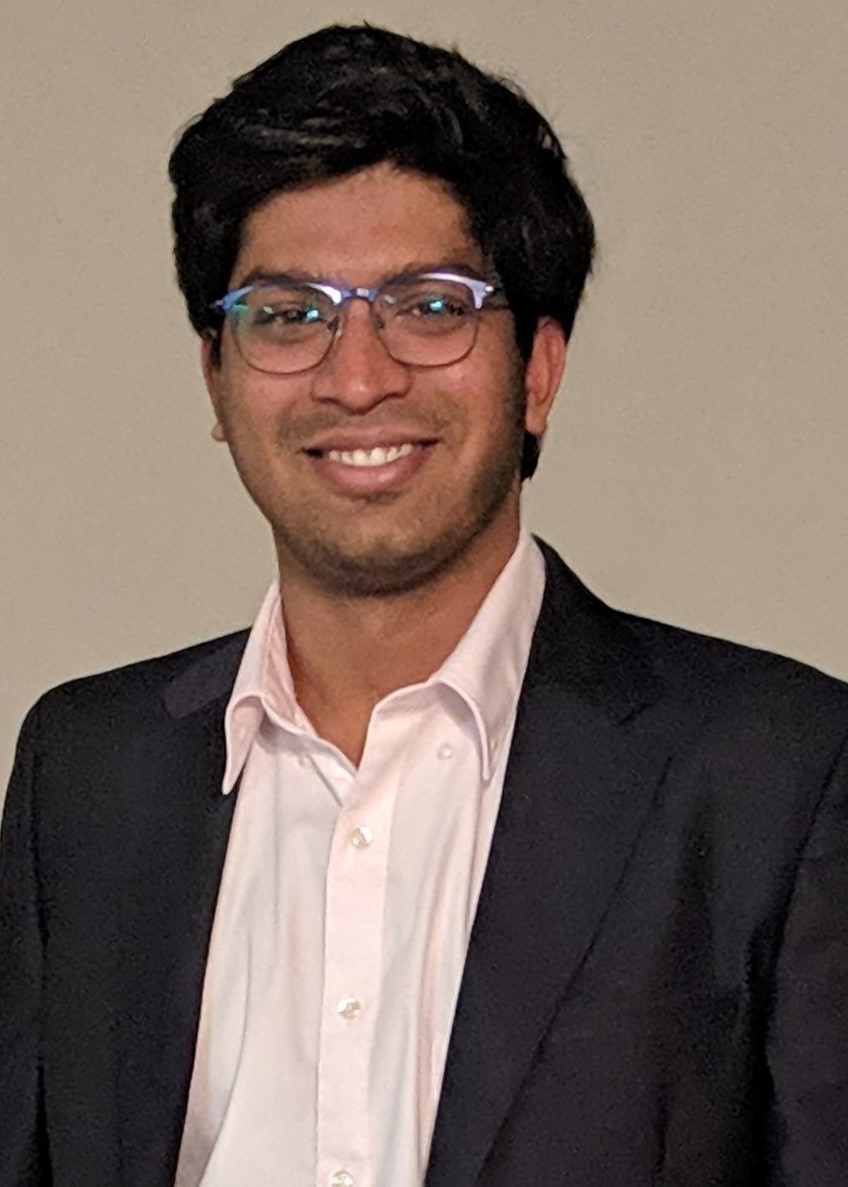 Abhinav Nishant is a Ph.D. student at the J.C. Wyant College of Optical Sciences. He is working with Dr. Robert Norwood in the study and development of optical polymers for integrated photonics applications. Being awarded the Hitachi Electron Microscopy Scholarship is a great source of encouragement for Abhinav, validating for him the importance of the research he has undertaken. Abhinav writes, “With the support of Hitachi and Kuiper Imaging Facility, I can further my study of low-cost optical materials, paving the way towards making high quality and inexpensive photonic devices, such as trace gas sensors.” In the coming months, Abhinav aims to publish his work to showcase the high-quality research being done at the University of Arizona.
Abhinav Nishant is a Ph.D. student at the J.C. Wyant College of Optical Sciences. He is working with Dr. Robert Norwood in the study and development of optical polymers for integrated photonics applications. Being awarded the Hitachi Electron Microscopy Scholarship is a great source of encouragement for Abhinav, validating for him the importance of the research he has undertaken. Abhinav writes, “With the support of Hitachi and Kuiper Imaging Facility, I can further my study of low-cost optical materials, paving the way towards making high quality and inexpensive photonic devices, such as trace gas sensors.” In the coming months, Abhinav aims to publish his work to showcase the high-quality research being done at the University of Arizona.
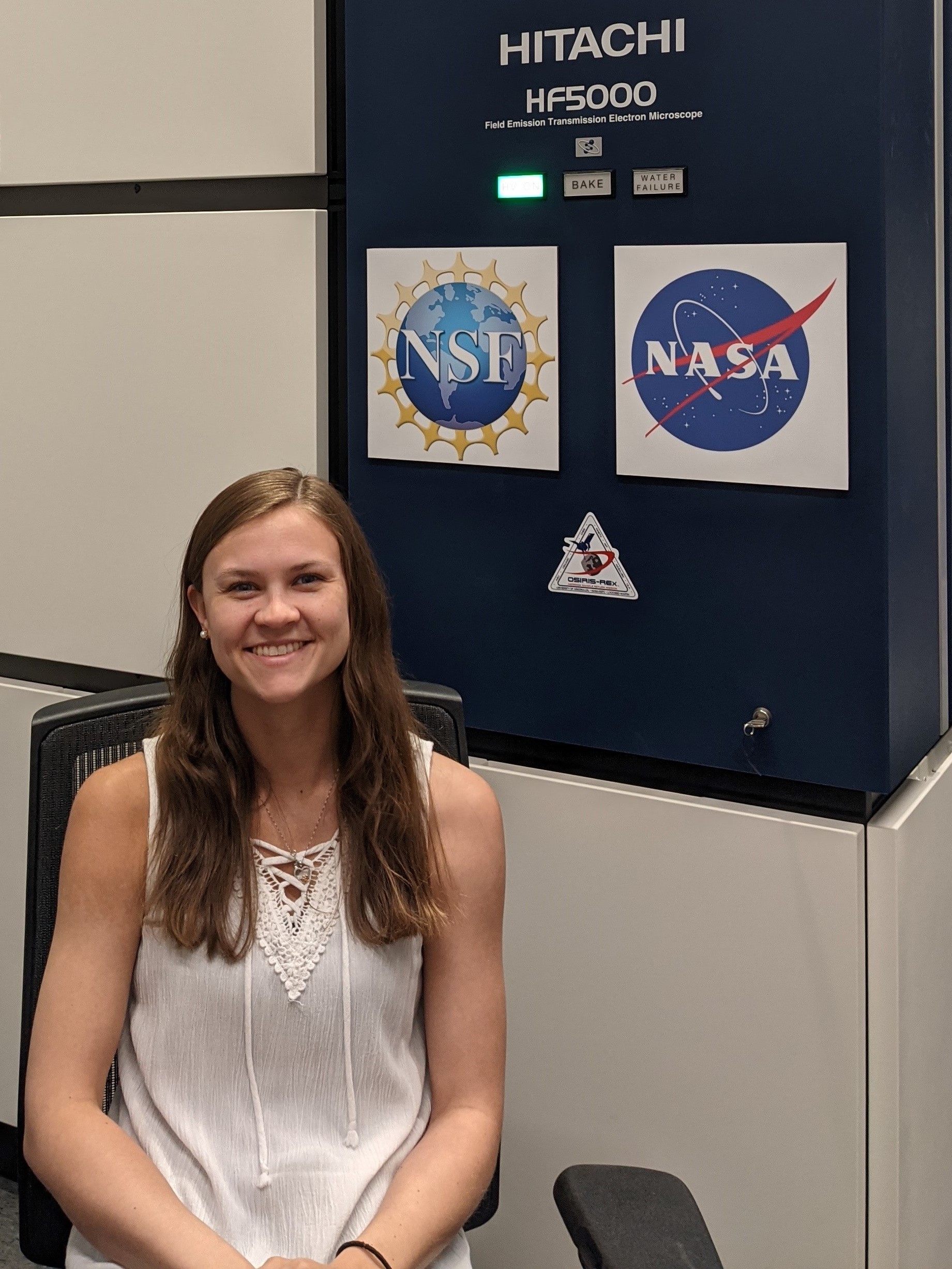 Laura Seifert is a fourth year Ph.D. student at the Lunar and Planetary Laboratory. Her research involves the chemical and structural characterization of circumstellar grains that formed in the ejecta of supernova explosions. These grains are preserved in primitive materials such as meteorites and Laura analyzes them using advanced electron microscopy techniques. The goals of Laura’s research are to understand the types of materials, structures, and compositions that are formed in supernova environments and use such information to understand their thermodynamic origins, transport, subsequent modification, and preservation in solar-system materials. Laura writes, “I’m honored to receive the Hitachi Electron Microscopy Scholarship, which will further support my research and dissertation.” Upon completion of the Ph.D., Laura aspires to a career working at a NASA center continuing her work with planetary materials and advanced electron microscopy.
Laura Seifert is a fourth year Ph.D. student at the Lunar and Planetary Laboratory. Her research involves the chemical and structural characterization of circumstellar grains that formed in the ejecta of supernova explosions. These grains are preserved in primitive materials such as meteorites and Laura analyzes them using advanced electron microscopy techniques. The goals of Laura’s research are to understand the types of materials, structures, and compositions that are formed in supernova environments and use such information to understand their thermodynamic origins, transport, subsequent modification, and preservation in solar-system materials. Laura writes, “I’m honored to receive the Hitachi Electron Microscopy Scholarship, which will further support my research and dissertation.” Upon completion of the Ph.D., Laura aspires to a career working at a NASA center continuing her work with planetary materials and advanced electron microscopy.
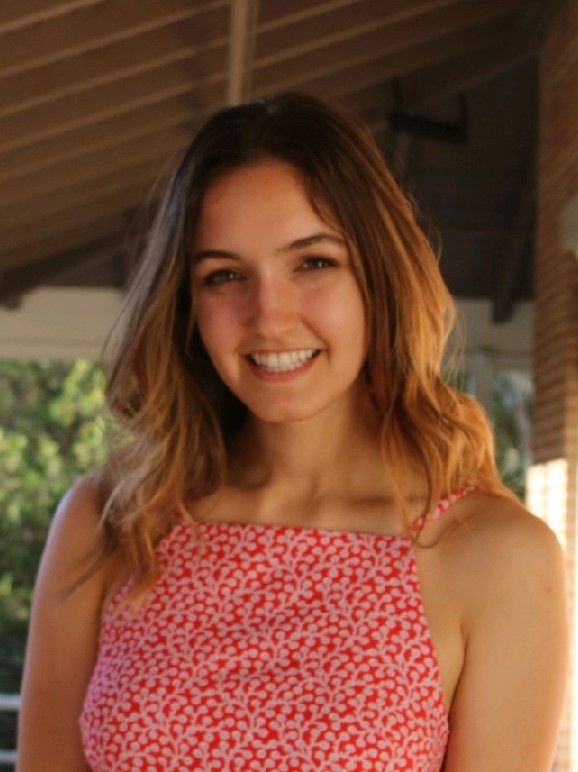 This year's recipient of the LPL Staff Excellence Award is Keara Burke, Image Processing Engineer with the OSIRIS-REx mission. Keara began working with OSIRIS-REx as an undergraduate on a project that had her counting rocks. In 2019, after completing her degree in Systems Engineering, she went on to co-lead the OSIRIS-REx site-selection campaign's boulder counting effort, tallying more than 30,000 boulders over the course of the mission. This meant long hours of tedious analysis and some 60-hour work weeks due to staffing shortages.
This year's recipient of the LPL Staff Excellence Award is Keara Burke, Image Processing Engineer with the OSIRIS-REx mission. Keara began working with OSIRIS-REx as an undergraduate on a project that had her counting rocks. In 2019, after completing her degree in Systems Engineering, she went on to co-lead the OSIRIS-REx site-selection campaign's boulder counting effort, tallying more than 30,000 boulders over the course of the mission. This meant long hours of tedious analysis and some 60-hour work weeks due to staffing shortages.
In addition to nominal job duties, Keara regularly takes on special projects such as taking the lead on a now-published article that synthesized the OSIRIS-REx boulder-counting results. Over the past year, she has supported several large-scale proposal efforts and pitched in on high-value proposal development. Beginning in 2020, Keara has worked primarily as a systems engineer within LPL's spaceflight seismometer program, SIIOS PSTAR. In that role, Keara is responsible for generating, tracking, and verifying instrument requirements by reviewing design and test documentation for spaceflight seismic sensors.
Keara is an extraordinary engineer who has already made outstanding contributions to LPL and UArizona. The skills and experience she has cultivated will continue to play an important role in the future of research and exploration at LPL.
 LPL Associate Professor Christopher Hamilton is a National Science Foundation (NSF)-Fulbright Arctic Scholar currently working from the University of Iceland to document the products and impacts of Icelandic flood lava eruptions. On February 21, 2021, an earthquake swarm began on the Reykjanes Peninsula, near the capital of Reykjavik, and on March 3, volcanic tremor was identified—signaling magma movement within the crust. Considering a volcanic eruption to be imminent, Christopher worked with Solange Duhamel, Associate Professor with UArizona's Molecular and Cellular Biology Department (with a faculty appointment in LPL), to obtain support to investigate the eruption.
LPL Associate Professor Christopher Hamilton is a National Science Foundation (NSF)-Fulbright Arctic Scholar currently working from the University of Iceland to document the products and impacts of Icelandic flood lava eruptions. On February 21, 2021, an earthquake swarm began on the Reykjanes Peninsula, near the capital of Reykjavik, and on March 3, volcanic tremor was identified—signaling magma movement within the crust. Considering a volcanic eruption to be imminent, Christopher worked with Solange Duhamel, Associate Professor with UArizona's Molecular and Cellular Biology Department (with a faculty appointment in LPL), to obtain support to investigate the eruption.
With initial support from the university's Research, Innovation, and Impact Office and the NSF Rapid Response Research Program, Solange and Christopher have been developing times-series monitoring of the geomorphology and microbiology of the Reykjanes region, before and after the start of the eruption, which began on March 19 at 8:45 p.m. GMT. LPL graduate student Joana Voigt and Research Specialist Michael Christoffersen traveled to Iceland in April to conduct novel measurements of the active eruption using drones (i.e., Unoccupied Aircraft Systems) and other state-of-the-art instruments to contribute to Iceland's volcano monitoring effort and address fundamental questions related to planetary volcanism and astrobiology. The eruption will continue into the summer, providing additional opportunities for students to develop first-hand observations of this unique event as a planetary analog.
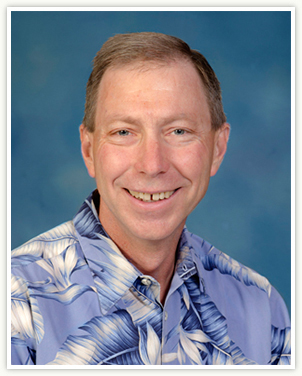 It's time for a change. After about a decade leading this wonderful organization, I've just retired, and Mark Marley has taken over as Director of the Lunar and Planetary Laboratory and Head of the Department of Planetary Sciences. It's been a great decade for me, and I'm satisfied with where LPL is in many ways (although there are always things that a person wishes they'd done better), but, again, it's time for a change, and I'm thrilled that it's Mark. He's an LPL alum (the first one to become Director), an accomplished scientist, and he's got lots of good ideas for ways to move LPL forward. In the last 10 years, LPL has been able to hire some great scientists and teachers, has produced some outstanding graduates, and this brilliant bunch has produced more than enough great ideas and projects to keep this newsletter full. In fact, LPL has been so productive that we've started a monthly newsletter full of press releases about our science.
It's time for a change. After about a decade leading this wonderful organization, I've just retired, and Mark Marley has taken over as Director of the Lunar and Planetary Laboratory and Head of the Department of Planetary Sciences. It's been a great decade for me, and I'm satisfied with where LPL is in many ways (although there are always things that a person wishes they'd done better), but, again, it's time for a change, and I'm thrilled that it's Mark. He's an LPL alum (the first one to become Director), an accomplished scientist, and he's got lots of good ideas for ways to move LPL forward. In the last 10 years, LPL has been able to hire some great scientists and teachers, has produced some outstanding graduates, and this brilliant bunch has produced more than enough great ideas and projects to keep this newsletter full. In fact, LPL has been so productive that we've started a monthly newsletter full of press releases about our science.
I hope you enjoy the newsletter, I hope you stay in touch with LPL, and I want to thank all the faculty, staff, students, alumni, and friends of LPL who have made this, as my predecessor Mike Drake once told me, "the best job on campus."
Timothy D. Swindle, Ph.D.

Heather Enos has retired from LPL. Heather served as Deputy Principal Investigator and Project Planning and Control Officer for the OSIRIS-REx mission. She began her career at LPL in 1997 with the Mars Odyssey Gamma Ray Spectrometer program. Heather has held key management roles in many other missions, including the Mars Phoenix Lander Mission, Lunar Reconnaissance Orbiter, and Mars Science Laboratory (Curiosity Rover).
Heather is the recipient of several NASA Group Achievement Awards. In 2010, she received the NASA Exceptional Public Service Medal. Heather was honored with the Robert H. Goddard Award for New Opportunities Captured for leadership in winning the OSIRIS-REx mission in 2014; and in 2018, Heather received the University of Arizona's Billy Joe Varney Award for Excellence.
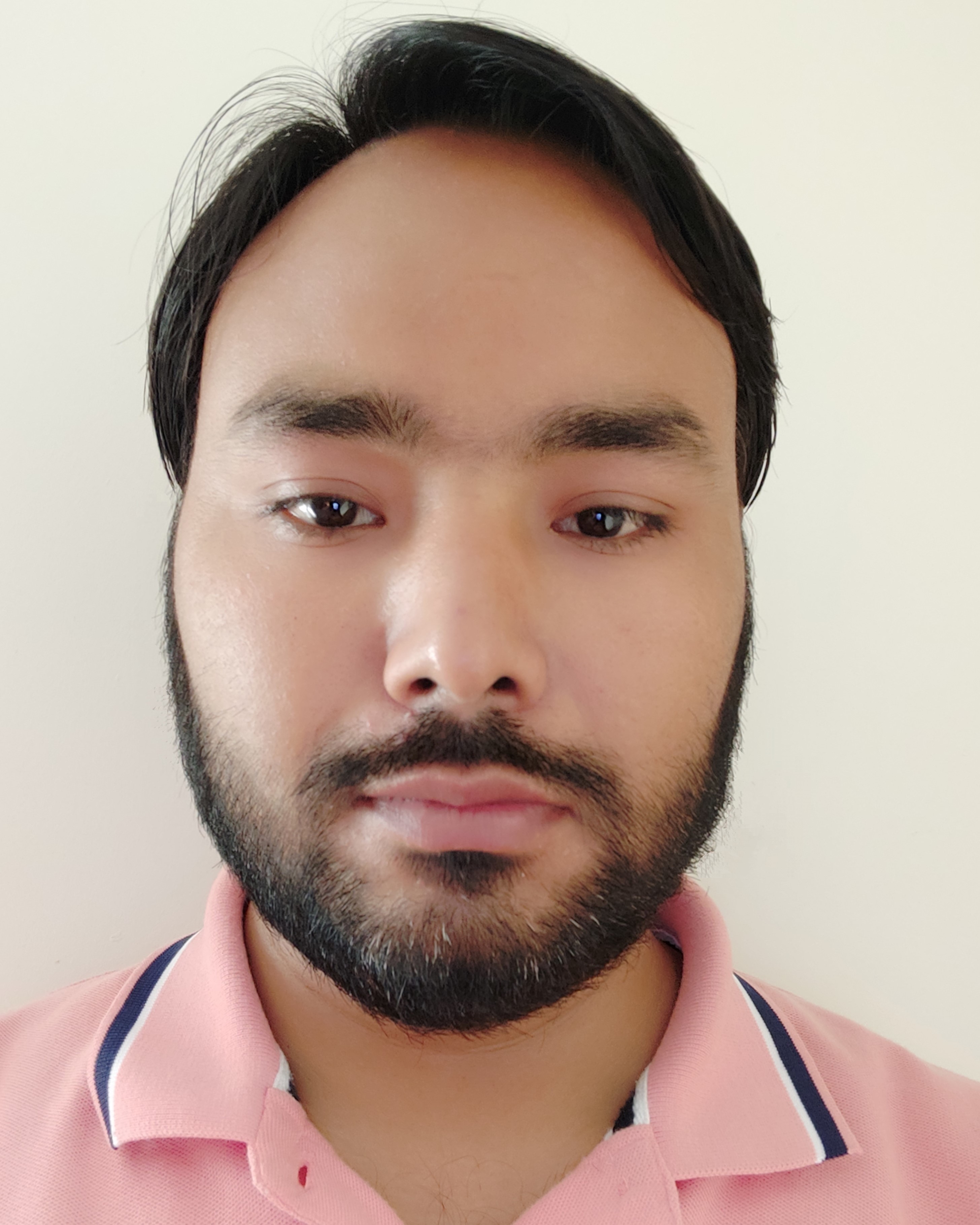 Dr. Manpreet Singh joined LPL in March 2021 as a Postdoctoral Research Associate working with Research Scientist Dr. Federico Fraschetti. Manpreet studies interplanetary and astrophysical collisionless shock waves and particle acceleration.
Dr. Manpreet Singh joined LPL in March 2021 as a Postdoctoral Research Associate working with Research Scientist Dr. Federico Fraschetti. Manpreet studies interplanetary and astrophysical collisionless shock waves and particle acceleration.
Manpreet is from Batala (Punjab, India). He obtained his B.Sc. (Physics, Chemistry, Mathematics) in 2010 from Government College Gurdaspur (Punjab), and his M.Sc. (Applied Physics) in 2012 and Ph.D. with specialization in Space Plasma Physics in 2019 from the Department of Physics, Guru Nanak Dev University (Amritsar, Punjab). His Ph.D. research was focused on the theoretical study of dispersive Alfvén waves in multi-species and dusty plasmas in space environments. In 2013, Manpreet earned a Bachelor of Education degree with specialization in pedagogy of science and mathematics.
In his free time Manpreet likes to play cricket, watch science documentaries and science fiction movies, gardening, and travel to new places.